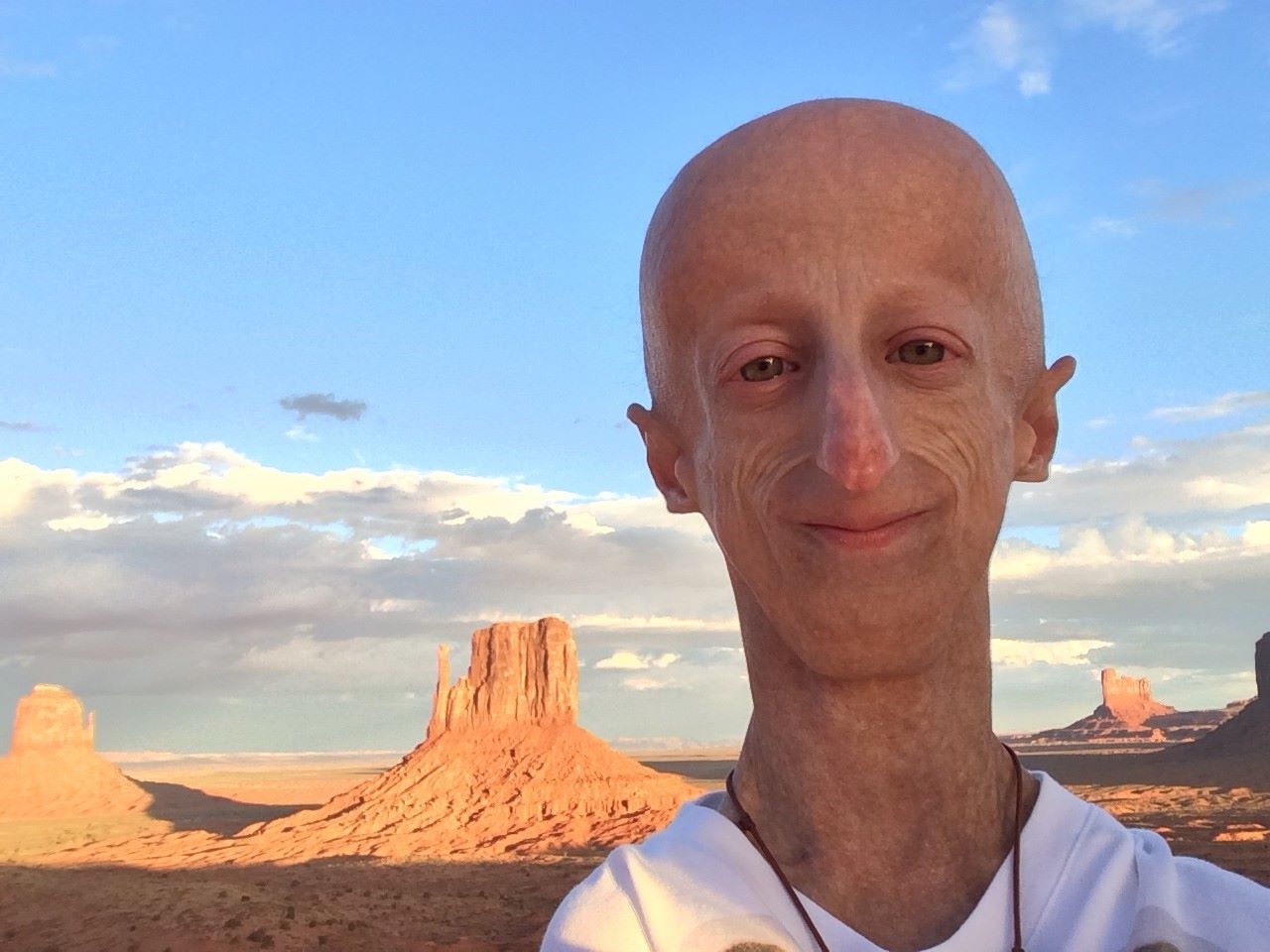
Progeria, also known as Hutchinson-Gilford Progeria Syndrome (HGPS), is a rare genetic disorder that causes children to age rapidly. Affecting approximately 1 in 20 million people, this condition leads to symptoms resembling aspects of aging at a very young age. Children with progeria often appear normal at birth but start showing signs within the first two years of life. These signs include growth failure, loss of body fat and hair, aged-looking skin, stiffness of joints, and cardiovascular problems. Despite their physical challenges, children with progeria typically have normal intelligence and emotional development. Understanding progeria not only helps in supporting affected families but also provides insights into the natural aging process. This article will delve into 50 fascinating facts about progeria, shedding light on its causes, symptoms, and ongoing research efforts.
What is Progeria?
Progeria, also known as Hutchinson-Gilford Progeria Syndrome (HGPS), is a rare genetic disorder. It causes children to age rapidly, starting in their first two years of life. This condition affects many aspects of the body and leads to a shortened lifespan.
- Progeria is extremely rare, affecting about 1 in 20 million people worldwide.
- The name "Progeria" comes from the Greek words "pro" meaning "before" and "g?ras" meaning "old age."
- It was first described in 1886 by Dr. Jonathan Hutchinson and later by Dr. Hastings Gilford in 1897.
- Children with Progeria typically appear normal at birth but start showing symptoms within the first year.
- The average life expectancy for someone with Progeria is around 14 years.
Symptoms and Physical Characteristics
The symptoms of Progeria are distinct and often lead to a diagnosis. These symptoms affect various parts of the body and can be quite severe.
- Children with Progeria often have a distinctive appearance, including a small face and jaw, a pinched nose, and a larger head.
- Hair loss, including eyelashes and eyebrows, is common in children with Progeria.
- They usually have thin, wrinkled skin that looks aged.
- Growth is significantly delayed, leading to short stature and low weight.
- Joint stiffness and hip dislocations are frequent due to abnormal bone development.
Genetic Causes
Understanding the genetic causes of Progeria helps in diagnosing and researching potential treatments. The disorder is linked to a specific mutation in a gene.
- Progeria is caused by a mutation in the LMNA gene, which produces the lamin A protein.
- This mutation leads to the production of an abnormal protein called progerin.
- Progerin causes cells to become unstable, leading to the symptoms of Progeria.
- The mutation is usually not inherited but occurs as a new mutation in the affected individual.
- Genetic testing can confirm the diagnosis of Progeria by identifying the LMNA mutation.
Health Complications
Progeria leads to various health complications that affect the quality of life and lifespan of those with the condition. These complications are often severe and require medical attention.
- Cardiovascular disease is the leading cause of death in children with Progeria.
- They are at high risk for heart attacks and strokes due to hardened and narrowed arteries.
- Osteoporosis, or weakened bones, is common and can lead to fractures.
- Respiratory issues, such as shortness of breath, can occur due to weakened muscles.
- Dental problems, including delayed tooth eruption and crowding, are frequent.
Diagnosis and Treatment
Early diagnosis and treatment can help manage symptoms and improve the quality of life for children with Progeria. While there is no cure, various treatments can help.
- Diagnosis is often based on physical symptoms and confirmed through genetic testing.
- Regular cardiovascular monitoring is crucial for managing heart-related complications.
- Low-dose aspirin is often prescribed to reduce the risk of heart attacks and strokes.
- Physical therapy can help manage joint stiffness and improve mobility.
- Growth hormone treatment has been used to help increase height and weight.
Research and Advances
Ongoing research aims to find better treatments and, ultimately, a cure for Progeria. Scientists are making progress in understanding the disorder and developing new therapies.
- The Progeria Research Foundation was established in 1999 to support research and find a cure.
- In 2003, the gene mutation causing Progeria was identified, a significant breakthrough.
- Clinical trials are ongoing to test new drugs that target the abnormal progerin protein.
- Lonafarnib, a drug initially developed for cancer, has shown promise in treating Progeria.
- Gene therapy is being explored as a potential future treatment for Progeria.
Living with Progeria
Living with Progeria presents unique challenges, but many children lead fulfilling lives with the support of their families and communities.
- Children with Progeria often have a strong sense of resilience and positivity.
- They attend school, participate in activities, and form friendships like other children.
- Support groups and online communities provide valuable resources and connections.
- Awareness campaigns help educate the public and reduce stigma associated with Progeria.
- Families of children with Progeria often become advocates for research and support.
Famous Cases and Media
Progeria has gained attention through various media, helping to raise awareness and support for those affected by the disorder.
- Sam Berns, a teenager with Progeria, became well-known through his TEDx talk and documentary "Life According to Sam."
- Hayley Okines, another young person with Progeria, wrote an autobiography and appeared in several documentaries.
- The character Benjamin Button, from the film "The Curious Case of Benjamin Button," was inspired by Progeria, although the story is fictional.
- Progeria has been featured in numerous TV shows, books, and articles, bringing attention to the condition.
- Awareness events, such as Progeria Awareness Day, help raise funds and support for research.
Support and Resources
Various organizations and resources are available to support individuals with Progeria and their families. These resources provide valuable information and assistance.
- The Progeria Research Foundation offers resources, support, and funding for research.
- Global Genes is an organization that supports rare disease communities, including those affected by Progeria.
- Online forums and social media groups provide a platform for families to connect and share experiences.
- Medical centers specializing in genetic disorders can offer specialized care and treatment.
- Educational resources help schools and communities understand and support children with Progeria.
Future Outlook
The future for individuals with Progeria is hopeful, with ongoing research and advancements in treatment. Scientists and advocates continue to work towards better outcomes.
- Advances in genetic research may lead to new treatments and possibly a cure for Progeria.
- Increased awareness and funding can accelerate the pace of research and development.
- Collaboration between researchers, doctors, and families is crucial for progress.
- New therapies, such as gene editing, hold promise for treating genetic disorders like Progeria.
- The resilience and determination of those affected by Progeria inspire continued efforts to improve their lives.
Final Thoughts on Progeria
Progeria, a rare genetic condition, affects only a handful of children worldwide. These kids age rapidly, facing health challenges usually seen in the elderly. Despite its rarity, progeria has taught scientists a lot about aging and genetics. Research continues, offering hope for better treatments and maybe even a cure. Families dealing with progeria show incredible strength and resilience. They remind us of the importance of support, understanding, and compassion. Awareness and funding for progeria research can make a big difference. Every bit of knowledge gained brings us closer to helping these children live longer, healthier lives. So, next time you hear about progeria, remember the brave kids and the dedicated researchers working hard to change their futures.
Was this page helpful?
Our commitment to delivering trustworthy and engaging content is at the heart of what we do. Each fact on our site is contributed by real users like you, bringing a wealth of diverse insights and information. To ensure the highest standards of accuracy and reliability, our dedicated editors meticulously review each submission. This process guarantees that the facts we share are not only fascinating but also credible. Trust in our commitment to quality and authenticity as you explore and learn with us.


